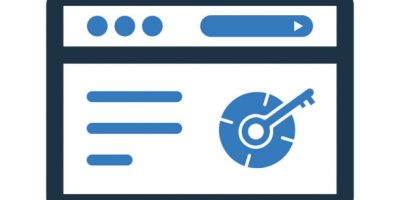Google Analytics custom dashboards are an excellent way to see key website metrics quickly. This post will show you how to create a dashboard that tracks the results of specific website changes. You’ll better understand the power of Google Analytics’ custom dashboards and how you can set one up.
You’ll find links at the end of this post to editable pre-built Google Analytics Dashboards. These pre-built reports will give you an idea of how to create your dashboard.
How to Determine if you need a custom dashboard
Decide what you are going to measure first. Dashboards can be useful when you save time and effort by combining data from different reports. You can determine the value of a dashboard by deciding what information you want to see on it.
This is a real-life example from our work. A website did not have many ways to collect lead information. Because the homepage accounted for almost 40% of the site’s pageviews and almost 70% of new visitors, it was identified as the first–and most constructive–opportunity for improvement.
We made several changes to our homepage, including:
A Call-To-Action at the top and center of the page. This CTA guides visitors at the top of the client’s industry funnel.
We then added a contact form so that those in the sales cycle could get more information from our client.
We have added video testimonials of current customers at the end of this main content.
We then created a Google Analytics dashboard to see how these changes performed.
Set up appropriate goals
You’ll then want to set up goals in Google Analytics. Using goals, you can measure the frequency of users taking a particular action on your website.
In this case, we needed to create custom goals for Google Analytics because we were only interested in certain interactions.
We had already set a goal for the people requesting our top-of-funnel content. We created a goal to track the sales form. We set goals for each video viewed when the previous page was the homepage.
The custom dashboard will measure more goals, but you can add and combine filters to the dashboard.
Add Widgets to Custom Dashboard
Add widgets to your dashboard. Dashboard widgets show the summary of reports.
How to set up a custom dashboard for Google Analytics.
We chose New Dashboard in the Reporting tab and called it “Homepage Modifications.” We then started adding widgets to our dashboard.
We clicked +Add Widget at the top of our dashboard. Then we named it and clicked Add a Metric under Show the Following Metric. We searched the available metrics to find the goal of downloading the top-of-funnel content. We could see many aspects of the goal through widgets. However, to keep our dashboard simple, we’re only interested in “Goal Completions.” You may want to monitor Goal Starts or Goal Abandonments for more complex goals.
For this dashboard, only the goal completions from the homepage should be tracked. We clicked Create a Filter while still in the Create a Widget section. We selected The Only Show filter, then clicked Add a dimension. The options that appeared included Previous Step-1 and Exact Match. You could also enter “/” as the client’s home page URL. We saved the widget.
Then, we created seven additional widgets. One to show the people who completed the form from the home page, three for those who watched each of the testimonial videos after visiting the video from the home page, and three more to show the people who filled out forms on any of the video pages.
Share the dashboard and monitor the results
We clicked the Share button at the top of the page and selected Share Object. This will allow everyone in the team with access to this Analytics view to monitor this dashboard. To view current stats, they can simply click Home Modifications in the Shared menu.
This is how the dashboard looks after two days.
Google Analytics custom dashboards make it easy to track the progress of the changes.
Download Google Analytics Custom Dashboards
You can find many resources to help you create a custom Google Analytics dashboard tailored to your role. I like ten useful Google Analytics Custom Dashboards by Graham Charlton.




















Comments